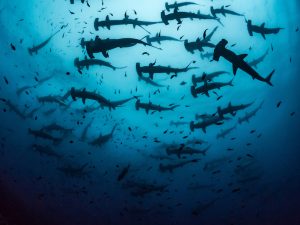Welcome to volume #3 of Dear Shark Man, an advice column inspired by a ridiculous e-mail I received. You can send your questions to me via twitter (@WhySharksMatter) or e-mail (WhySharksMatter at gmail).
Dear Shark Man,
Since it’s #GivingTuesday, what are some shark conservation charities you recommend?
Sincerely,
Generous in Georgia
Dear Generous,
There are a lot of great shark conservation specific, ocean conservation, or general conservation non-profits out there. There are also some great scientific research laboratories and societies that can really use your help.
My go-to shark conservation charity is Shark Advocates International (donate here). SAI President Sonja Fordham, a frequent contributor to this blog, is one of my conservation heroes. SAI advocates for more sustainable fisheries management and other important conservation issues around the world, and they do a lot on a small budget .
If you’d rather support research, you can also donate to the American Elasmobranch Society or the Marine Section of the Society for Conservation Biology. These organizations both do a lot to promote early career researchers, and I wouldn’t be where I am today without both of them.
Wherever you donate, Andrew has some tips on getting the most bang for your buck.
Dear Shark Man,
Are bull sharks the only shark species that can enter freshwater?
Sincerely,
Totally not afraid to swim in the river by our house in Texas
Dear Totally,
While bull sharks are the most famous shark species capable of entering freshwater, they are far from the only species. In fact, dozens of species of sharks and rays are capable of entering brackish or 100% fresh water, and according to the IUCN Red List’s Shark Specialist Group, 33 species can spend their entire lives in freshwater! My favorite freshwater-capable sharks are the Glyphis sharks, which are found in the Indo-Pacific. I wrote about these for the Washington Post a couple of years ago, and unfortunately they are some of the most endangered sharks on Earth.
Dear Shark Man,
I’m afraid my child is turning into a shark. Any advice?
Sincerely,
Concerned in Concord
Dear Concerned,
Mazel Tov! It’s always exciting to bring a shark into your family! Typically people do this by adopting a shark through a donation to a research laboratory (my Ph.D. lab did this) or a conservation non-profit (Shark Trust has a great program), but your family has been blessed with a more literal solution.
The first thing to do is figure out what species of shark you have on your hands, which matters for a whole bunch of practical reasons. Some shark species (like the dwarf lanternshark) are only a few inches long when they’re full grown, while others (like the whale shark) can be the size of a school bus. It looks like your shark is already much larger than a lanternshark, so you may want to invest in a pretty big tank. You’ll also want to know the species to determine an optimal diet (whale and basking sharks filter-feed on plankton, nurse sharks eat lobster and conch and crabs, great whites eat seals, tiger sharks eat sea turtles, etc.) Once you have a housing and feeding regime set up, you should be in pretty good shape. Normally I advise people to not hug sharks, but since this one started off as your human child, it may be ok in this case.
Also, I’d recommend keeping your shark child away from Kylo Ren. That guy is bad news.
Dear Shark Man,
Why do scalloped hammerheads school?
Sincerely,
Awestruck in America
Dear Awestruck,
While many shark species are typically solitary, you’ve correctly identified that scalloped hammerhead sharks sometimes form massive schools, resulting in an incredible spectacle.

In general, schooling behavior provides small fish with some protection from predators. That’s clearly not the case with scalloped hammerhead sharks, though, since they’re quite large and few species eat them. Sometimes fishes aggregate together to help with feeding, but hammerhead schools actually disperse at night to allow individuals to hunt on their own. Sometimes fishes aggregate together for breeding purposes, but hammerhead schools are mostly composed of females. Dr. Pete Klimley, an expert on scalloped hammerhead schooling behavior, has written that schooling behavior in this case is likely for social purposes.
That’s it for Volume #3 of Dear Shark Man! Keep your Dear Shark Man questions coming, and be sharky to each other!
If you appreciate my shark research and conservation outreach, please consider supporting me on Patreon! Any amount is appreciated.
